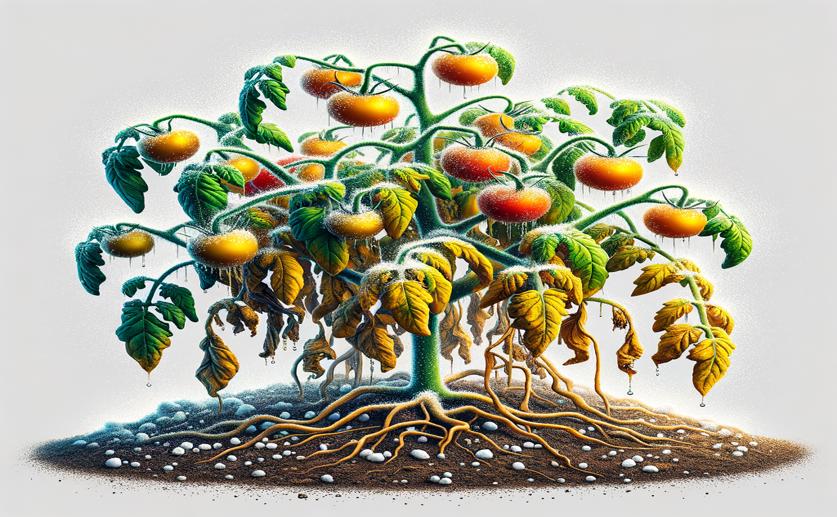
Understanding How Tomato Plants Cope with Salt and Low Nitrogen Stress
Greg Howard
29th July, 2024

Image Source: Natural Science News, 2024
Key Findings
- Researchers at the University of Nevada, Reno, found that nitrogen and salinity stress significantly change the composition of tomato leaf cuticle and root suberin
- The tomato cutin mutant (cd1) showed lower shoot biomass and reduced nitrogen use efficiency compared to the wild type under all conditions
- The study suggests that modifying cuticle and suberin composition could help breed crops that are more tolerant to stress
AgricultureBiochemPlant Science
References
Main Study
1) Physiological characterization of the tomato cutin mutant cd1 under salinity and nitrogen stress.
Published 29th July, 2024
Journal: Planta
Issue: Vol 260, Issue 3, Jul 2024
Related Studies
2) Salinity induced physiological and biochemical changes in plants: An omic approach towards salt stress tolerance.
3) The Plant Cuticle: An Ancient Guardian Barrier Set Against Long-Standing Rivals.
4) Adaptation of Root Function by Nutrient-Induced Plasticity of Endodermal Differentiation.
5) A suberized exodermis is required for tomato drought tolerance.



 26th July, 2024 | Jenn Hoskins
26th July, 2024 | Jenn Hoskins